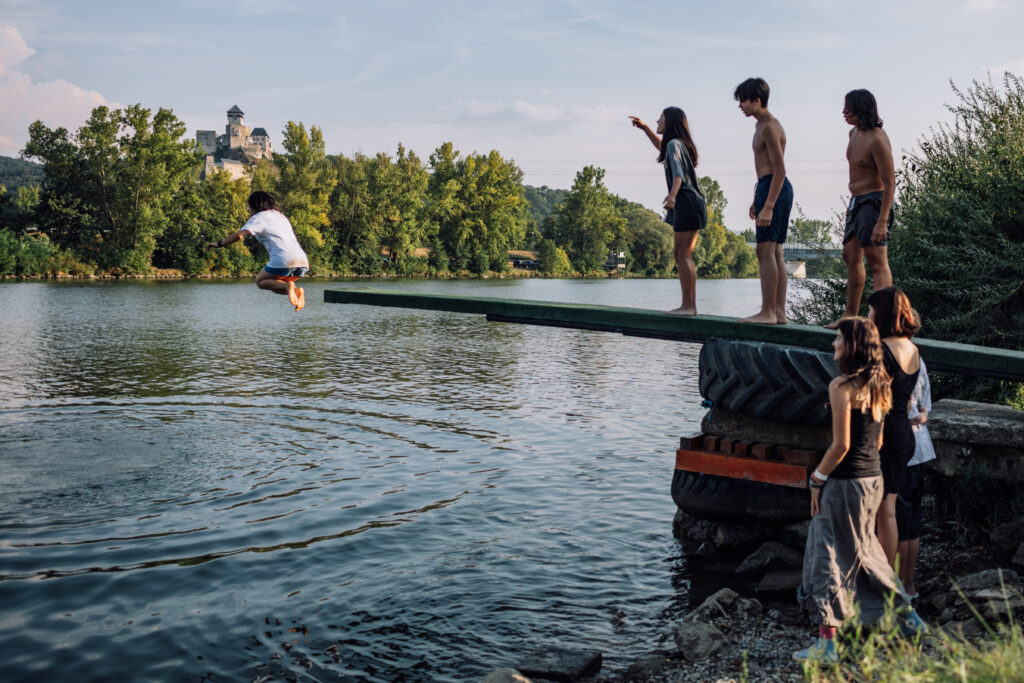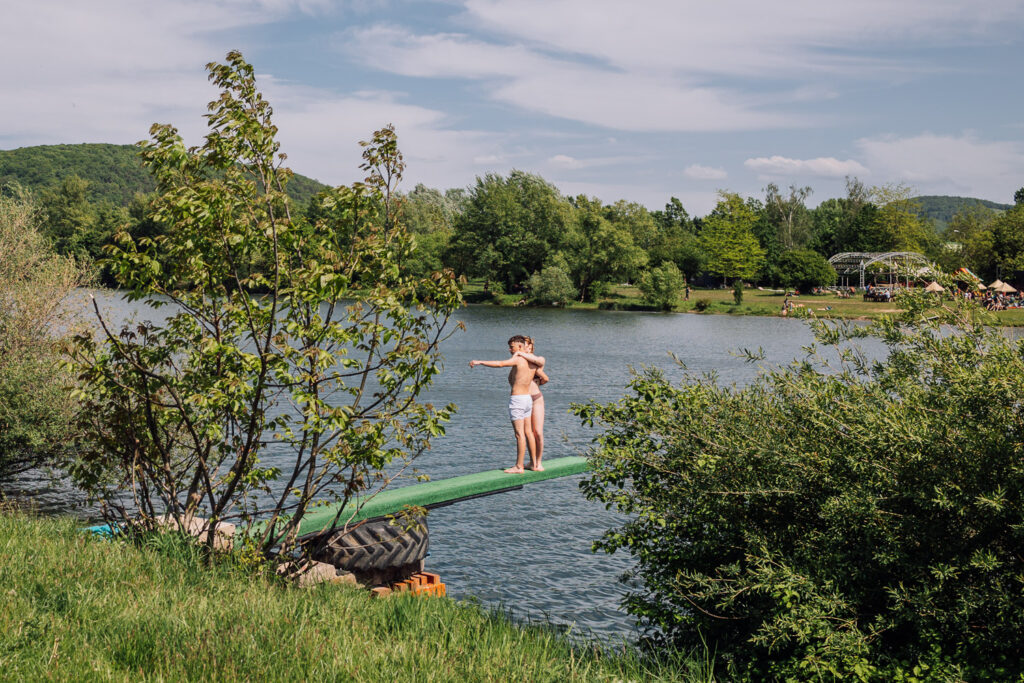Aqua Vitae, under the curatorial direction of Lydia Pribišová, opens a dialogue about water and the Váh River through interdisciplinary site-specific participatory and discursive art projects. This programme will connect art with nature, bring new perspectives on water conservation and foster important discussions over the future of rivers and aquatic ecosystems in the region.
Aqua Vitae
About

Aqua Vitae
2025 – 2026
Artists: Pia Lindman, Lucia Romualdi, Urbonas, Maja Štefančíková
Curator: Lýdia Pribišová
In Trenčín, one of the most important unifying forces is water—especially the river Váh, the longest river in Slovakia. Water is a universal element of life, an essential condition for existence. The name Váh probably comes from the Latin vagus, meaning wandering or roaming, referring to the river’s former variability and the instability of its riverbed. Alternatively, its origin may lie in the Germanic Wag (stormy, restless water) or the German Woge (surge, wave). Besides surface water, the city is also shaped by an underground river current that influences the urbanism and architecture of Trenčín. This phenomenon can be seen as a metaphor for the underground music scene that was active in the city during communism and left a mark on its cultural memory.
The Aqua Vitae project opens a dialogue about water and the river Váh through interdisciplinary site-specific participatory and discursive art projects. It connects art with nature and initiates discussions about the importance of water protection and the future of water ecosystems in the region. A series of artistic interventions—including tours, installations, performances, discussions, and walks—encourages residents and visitors of Trenčín to reflect on the issue of water in the urban environment and its political, ecological, and philosophical implications. An inspiration may also be the Whanganui River in New Zealand, which was granted legal personhood in 2017—an important precedent in the field of environmental protection.
Our bodies are made mostly of water, which circulates and connects us with other organisms, with those who came before us, and those who will come after us. Water is not just a biological element but also a bearer of memory. As Astrida Neimanis describes in her concept of hydrofeminism in the book Bodies of Water, our bodies are connected to countless other watery entities—from freshwater mussels and sea grasses to rainclouds and historical layers of collective unconscious. Water links the past with the future; it carries memory but also reveals the relationship between power and the commodification of resources.
Despite its life-giving properties, water is also a source of conflict, ecological crises, and political struggle. Due to climate change, we are encountering extreme phenomena such as droughts, floods, and toxic pollution. In this context, water is not just a physical substance but also a means to reinterpret the relationships between the human and the non-human spheres.
As Neimanis writes, quoting Jamie Linton, author of What Is Water: “Water is what we make of it.” In this spirit, Aqua Vitae invites us to reimagine water, to think with water, to learn from water. Water as medium, as communicator, as connector. As an element that resists full control, yet teaches us new ways of thinking, feeling, and being.
Events & activities
Will you give
volunteering a try?
Do you want to dedicate your free time to a meaningful project that won't just happen again?
Selected volunteer activities





